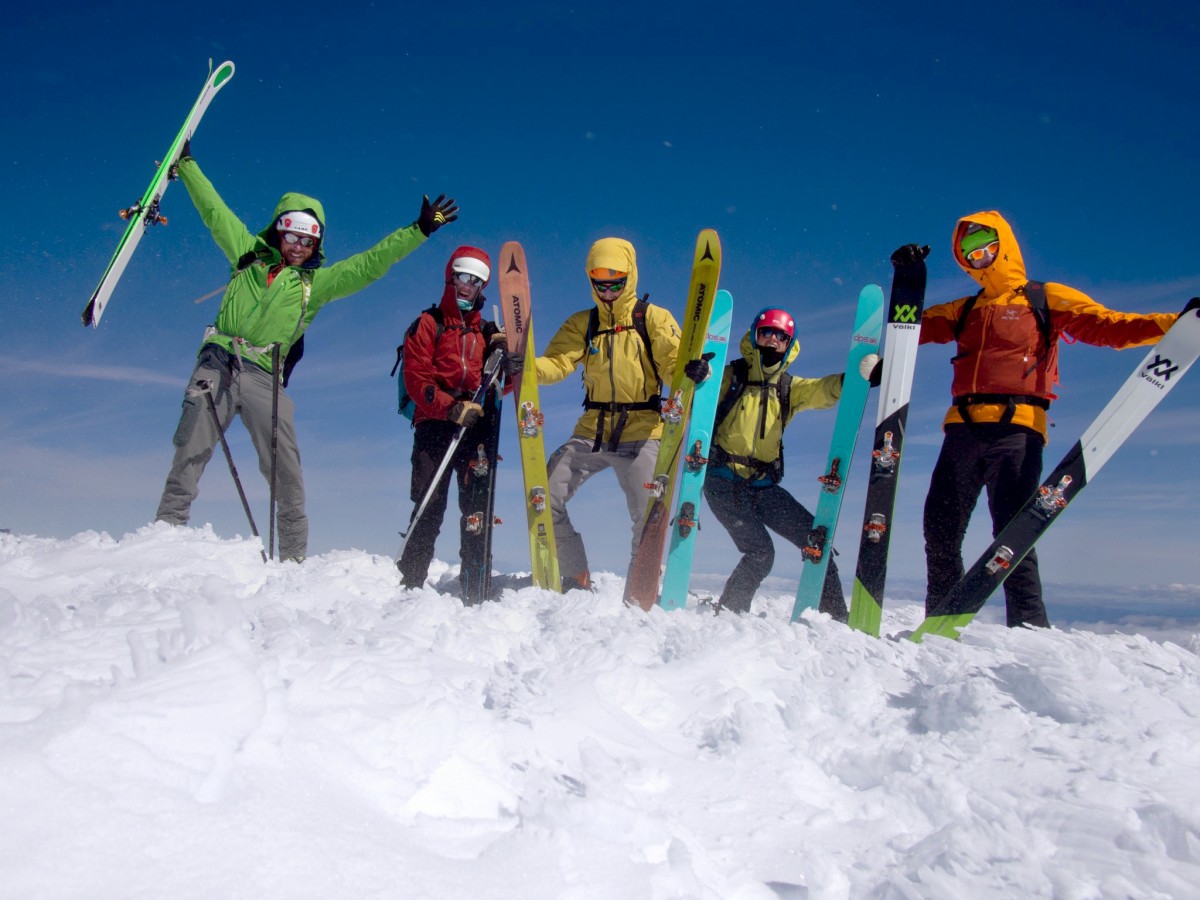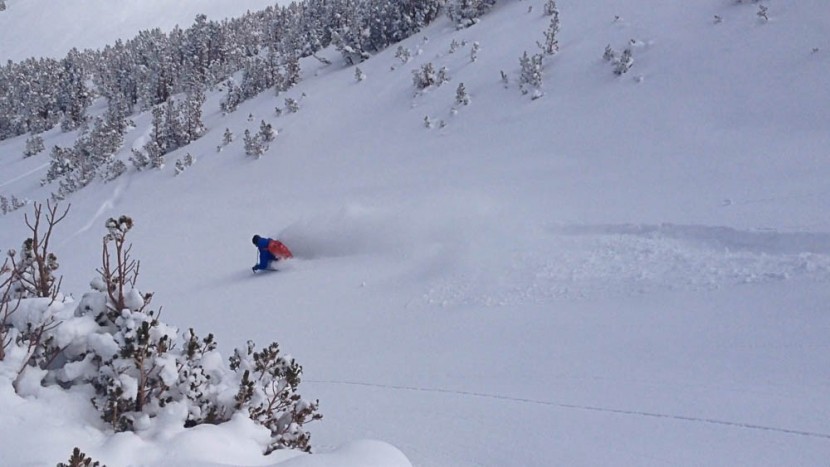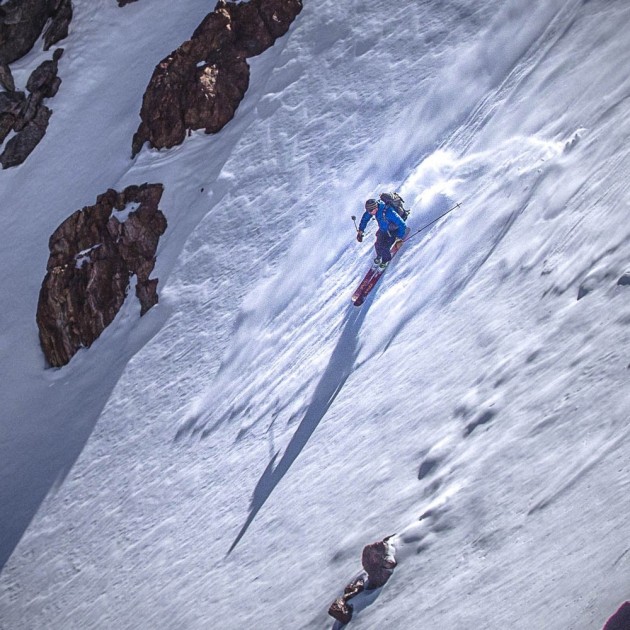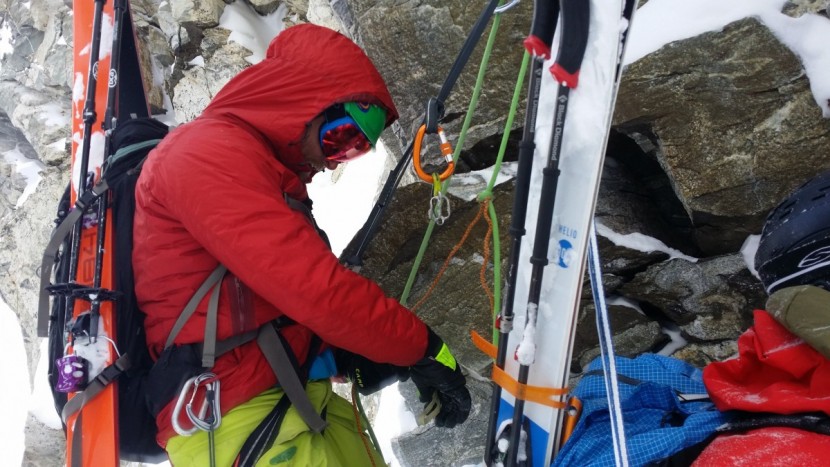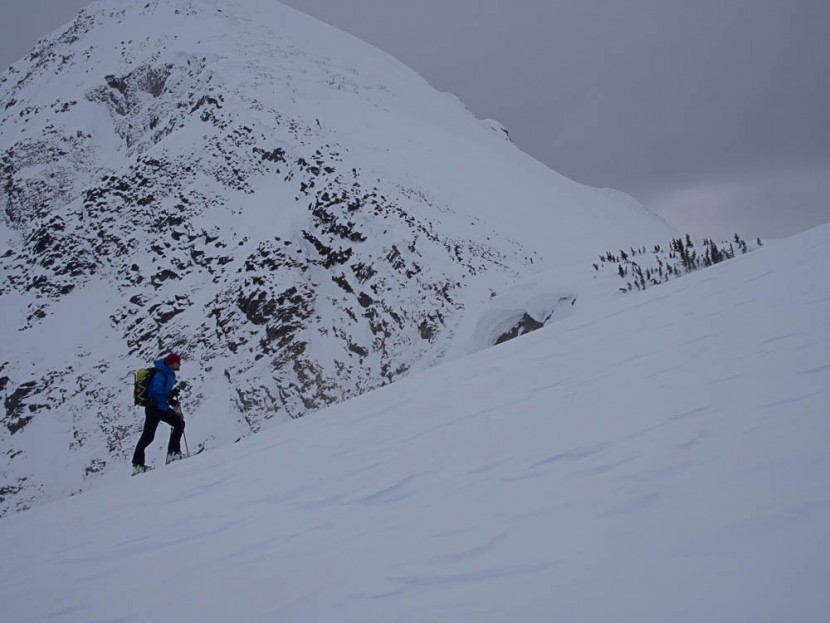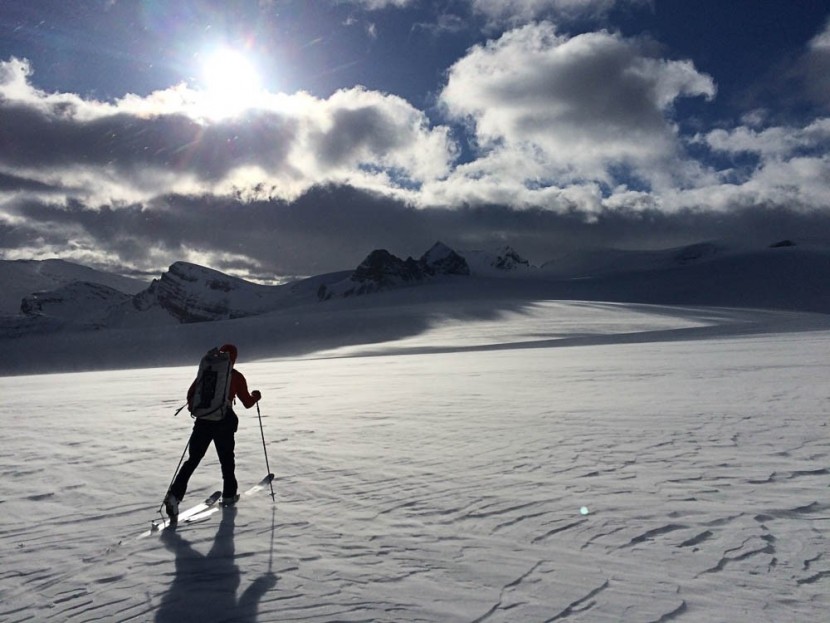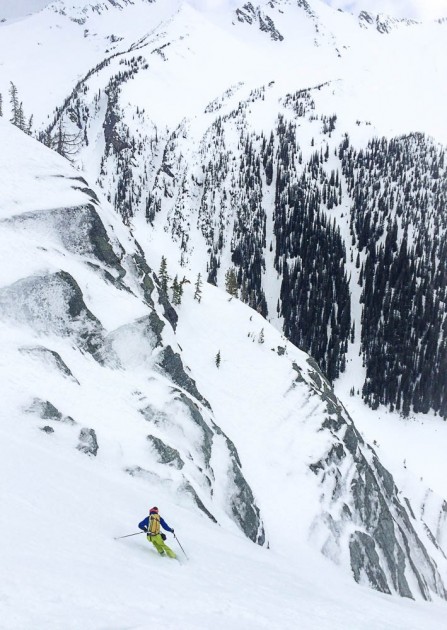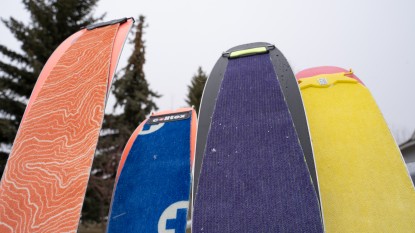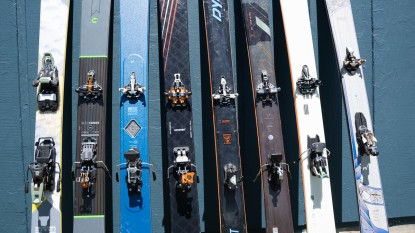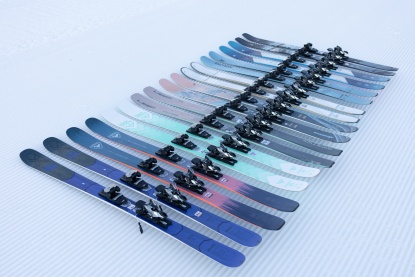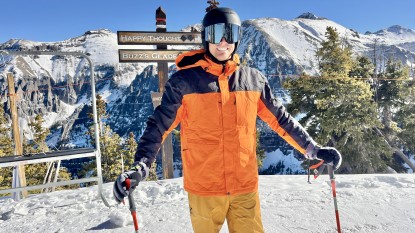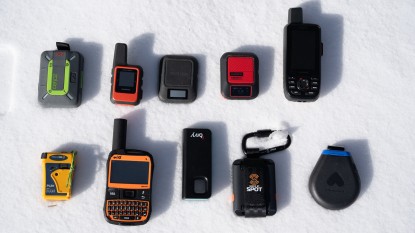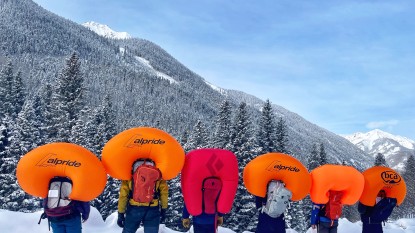Every single person, whether brand new to the backcountry or an old hat, can stand to learn something about choosing skis for their pursuits. In reviewing dozens of the best products on the market, we have learned a great deal about choosing skis. In assembling our testing team with an accumulated hundreds of years of experience, we tapped into a vast wealth of knowledge on selecting the right tool for the job. To see our full review and find the best products available, check out our full backcountry skis review. To learn more about selecting skis for yourself, read on.
So Many Ski Choices
In this review and article, we focus on general-purpose, alpine touring skis for backcountry skiing and ski mountaineering. However, people use tons of types of equipment in the backcountry.
All-Mountain, Touring Specific
In both ski mountaineering and backcountry skiing the user climbs most or all of a mountain under his or her own power, and then skis back down ungroomed, uncontrolled snow. Up to 90% of the time out is spent going up, and a large percentage of the downhill time is in variable and sometimes poor snow. One hundred percent of the experience is challenging, beautiful, and rewarding.
All-Mountain, Alpine Skis
Good all-mountain resort skis can make serviceable backcountry skis. They will be heavier for the uphill but go well on the downhill.
Women's Specific Models
Backcountry sticks come in women's models, just like resort skis. If brands take the time to design women's specific models that are actually different, women's skis come in shorter lengths and are generally a tough lighter than their male counterparts.
Powder Touring Skis
Watching ski movies and perusing Instagram would lead one to believe that only powder is skied in the backcountry. While it is true that backcountry riders get a higher percentage of their turns in good powder snow than their resort-bound brethren, there is still a great deal of non-powder skiing going on. Specifically, hiking uphill is the antithesis of powder skiing, and the gear is correspondingly opposite. Long, wide “powder skis” are heavy to carry uphill, with marginal gains in fun and efficiency in perfect powder snow. Powder is called “hero snow” for a reason. In our team's extensive experience, every single ski is a ton of fun in perfect powder snow. Powder, regardless of the tool chosen, is simply too good to split hairs over.
Philosophy aside, big powder-specific skis have their place for certain skiers. Somewhat ironically, powder-specific touring skis (for our purposes, essentially skis wider than 110mm underfoot) can make both breakable crust snow and really low-angle soft snow fun. Making breakable crust fun is great; so much of our wild winter terrain is often covered with the stuff. And making low-angle soft snow fun and fast is a risk management move. If we can have fun on 25-degree slopes, we are less tempted into steeper avalanche terrain. All this said, it is the truly masochistic and the truly dedicated that should own big powder skis for touring. The masochists love the weight, and the dedicated want to get out on the breakable days and the high avalanche hazard days.
The newly added Voile Hyperdrifter somewhat upends the above generalizations. This is a specialized, huge touring ski that is competitive in weight to all around, all-season touring skis. It has changed our perspective and it could change yours.
Rando Race
Randonnee Racing (or SkiMo, short for Ski Mountaineering) is rocketing up and skiing downhill, all on the same gear. This gear is ridiculously lightweight. Special skis, bindings, and boots, not to mention lycra clothing, is employed to cover amazing amounts of terrain in mind-blowingly short times. This equipment is also pressed into service occasionally outside of formal racing for long days on high and wild peaks.
The Types of All-purpose Backcountry Skis Available
We divide the products available into three weight classes. Weight is the primary variable in the way a ski goes uphill. Lighter skis are easier to carry. Also, weight is both directly and indirectly correlated to downhill ski performance. The mass in skis helps push them through different snow conditions. With fewer weight restraints, the material can be more finely tuned to enhance performance.
Ultralight
In this category, under about 1200 grams per foot, skis are a joy to tour on. With modern touring boots and bindings, skis in this category seem to almost glide along uphill, especially as compared to resort gear. Generally, and historically, skis in this weight class are fairly specialized and fragile. However, more and more R and D, as well as liberal use of advanced materials like carbon fiber, is increasing the performance level of these ultralight products.
Standard Weight
Between 1200 and 1600 grams lies a sweet spot for touring skis striking a balance between light weight and downhill performance. At the low end of the spectrum, the gear basically stays out of the way on the uphill. Up nearer 1800 grams skis begin to approximate the performance of resort gear.
Beefy
Resort skis, especially those designed for all-mountain use, seem to average just over 2000 grams. In that realm, backcountry-specific skis are basically competing with resort skis. It is between 1600 and 1800 grams that we consider skis too light for most all-mountain resort use, but heavy in the backcountry. For some, this is the sweet spot, as they wish to save a little energy over lugging resort gear but make few compromises on the downhill performance. We have found that very well-engineered skis can ski like an all-mountain resort ski while bringing the weight down below 1600 grams.
How to Select the Best Backcountry Ski For You
These are the factors that we consider to be the most important when deciding on your set-up for the backcountry.
Application
The first thing you should do to narrow down the field is to consider your actual or anticipated usage patterns. Even within the narrower ski touring field, there are preference, condition, terrain, and regional differences. Many ski tourers are content with a handful of trips a year, keeping the endeavors to a few hours or so in familiar places. Others get out most weekends, travel once or twice a year, and get into more serious terrain on occasion. Still others, usually those living some sort of alternative lifestyle in and around ski towns, charge hundreds of thousands of feet of highly varied ski terrain, most days a week, for more than half the year. Those on the mellower end of the spectrum will look for affordability, reliability, and familiarity. Weight and versatility are less important.
Those in the huge middle category have the most difficult shopping task. Their application is quite demanding, and they are apt to ask all of it of one set of backcountry skis. It is for this category of user that our comprehensive review is most useful. Our scoring criteria and review text are exactly targeted at the upper-level enthusiast. This user will make inherent compromises in weight and downhill performance. This user will have to look at the general climactic conditions in their chosen region(s) and really consider their own actual ski ability. At the upper end of the enthusiasm/volume spectrum, the hardcore user will need to have multiple sets of equipment just to spread out the wear and tear. Multiple sets of equipment, again for the really dedicated user, can represent different “quiver” slots. Our all-mountain backcountry ski review is a good discussion of what this latter most user might look for in an expedition or traveling ski.
Ski Ability and Style
The resort skier type descriptors barely serve our backcountry purposes. In-bounds it is as simple as beginner, intermediate, and expert. By the definitions of those categories, only expert skiers should be skiing in the backcountry. The easiest backcountry terrain and snow conditions are more difficult than the hardest black diamond terrain in-bounds. As soon as we get above and beyond the convenient, conventional categorization, describing skier type is more difficult.
- For backcountry purposes, a beginner is one that can ski an entire ski resort, but barely. This skier is new to wild snow, with limited foundational ski technique to adapt to the wild, deep, and variable. Beginner backcountry skiers should aim for all-around, forgiving skis. While they may be rocking the entire resort on whatever gear they try, the backcountry is a different beast. Going really specialized is not a great idea for the beginning backcountry skier. Instead, aim for versatile products that are known to ski poor snow well. Typically, this means skis around 100-105 mm under foot and weighing 1500 to 1700 grams per ski.
- An intermediate backcountry skier is an expert resort rider that has invested some time in skiing untamed snow or has high-level in-bounds ski experience and training. We define high-level in-bounds ski experience and training as multiple seasons of ski resort life and residence, or multiple seasons of ski professionalism, or multiple seasons of ski racing or formal lessons. These latter skiers, whether they have ridden out of bounds much yet or not, can readily adapt. Most of those that would fall into the category of intermediate backcountry skiers may have very well-developed ski preferences. It is this category that we find chooses skis that are too heavy. The ski preferences they've developed come from mechanized access. All their technique and accomplishment, of which they have an abundance, is on beefy equipment. It is tempting to keep the backcountry equipment beefy. However, this category of user also has real and valuable technique. These skiers can afford to go lighter and more specialized if their usage patterns dictate. Basically, the entirety of the OutdoorGearLab backcountry ski testing team fits in this category.
- An expert backcountry skier, disregarding, for now, their expertise in risk management and wilderness skill, has high-level in-bounds ski experience and training and has invested a great deal of time into skiing untamed snow. Expert backcountry skiers, as long as they truly do have the depth of experience in actual untamed snow, can ride anything they want to.
Be honest with yourself about where you fit in the above spectrum. While it certainly pertains to your selection of gear, it has an even larger bearing on your selection of partners, mentorship, terrain, objectives, and conditions.
Fitness and Size of Objective
Independent of ski ability, cardiovascular capacity has a great bearing on one's experience in the wild. Because so much of a backcountry day is uphill, one's strength and preparation for that is very important. Also, how far do you intend to go? Light weight is more important to less fit skiers. Lightweight equipment is also more important to skiers that wish to go great distances. What constitutes a “big day” is dependent on fitness, but we can make generalizations. For most ski tourers, about 3-4000 feet of climbing (and skiing back down the same amount) is an average full day. For the average outdoor athlete, this can be accomplished on any skis in the mid-weight range. Should that average athlete wish to go further on any given day, he or she should consider dropping the weight of their ski gear. High-end athletes can do up to 10,000 vertical feet on those same mid-weight skis, but beyond that will need lighter gear.
Ski mountaineering objectives, those requiring technical skills and equipment to access, generally reward lighter, more versatile skis. Scrambling with small skis on one's back is far easier than with big guns. Because of the steep nature of this terrain, it is generally done in lower avalanche hazard conditions. Lower avalanche hazard conditions are generally correlated with firmer snow. In this case, both snow conditions and logistical demands encourage and allow the use of smaller, lighter equipment.
Snow Type
What kind of snow do you prefer, and what type of snow will you actually get? There are regional differences in snow type, and there are differences that are the result of individual priorities, preferences, and skills (yes, finding good snow is a skill).
Perhaps your backcountry endeavors are seasonal, and you head to the backcountry only after the lifts have closed for the season. In this case, you are apt to be skiing firmer spring conditions and can choose skis appropriately. Perhaps your backcountry endeavors are only after the skiing in-bounds has dried up between storms, and you head out for scenery and adventure. In this case, you are apt to ski a greater proportion of breakable and funky conditions. Choose appropriately. Perhaps backcountry skiing is your priority, and you head out all that you can. In this case, you will get a whole mixed bag of conditions.
Traveling skiers have an even tougher task. With work and vacation schedules set far in advance, long-awaited ski vacations require that the rider play what's dealt. Traveling skiers can stack the odds in their favor by going during times known to be more reliable, but with mountain weather and climates, one never actually knows. While taking powder-specific equipment to the Canadian Selkirks in February is a pretty safe bet, one will further stack the odds in his or her favor by actually choosing more well-rounded equipment.
Type of Objective
Do you ski mellow, familiar terrain? Or do you seek out the high and wild, always chasing a new horizon? Do you aspire to ski the super steep and techy? Or keep it to the powder hunt? Probably, it is all of the above. If our article here tells you anything, it is that backcountry skis are best chosen for versatility. Even if you think you know exactly what you're getting into and what you prefer to ski, you're apt to find variable conditions at least some of the time.
Ski Construction and Shape
You will note that we've saved this almost for last. Ski materials, construction, and shape are important when put together, but at no point have we suggested one seek out any particular ski attribute or material to attain a certain performance goal. For backcountry skis, weight and durability matters, as does downhill performance. Weight and durability are a function of materials and construction quality, and weight and durability are essentially at odds. Lighter skis are less durable, and vice versa.
Downhill performance, overall, is a combination of the ski's ability to work with the user's technique to handle hard snow, soft snow, bad snow, speed, and steeps. This overall performance and the various manifestations of specialized performance are a function of a ski's construction style, materials, length, width, weight, sidecut, camber, and rocker. Much is made of each one of these attributes, especially at different times in history. In the early 1990s, the discussion focused around foam core vs. wood core and how that affected performance. In the mid-1990s, most ski performance was attributed to the sidecut (the relative widths of tip, waist, and tail of ski). More recently much has been made of camber (the tip to tail arc of the ski, either positive and called simply camber or negative and called reverse camber) and rocker (rocker is alternately defined as reversed camber and upturned tip and/or tail, whether the ski is cambered underfoot or not). Thankfully, the most recent era of ski construction does not have one “silver bullet” or buzzword that all are leaning on in any one way.
To get the weight down for the climb while optimizing downhill performance, these products make some compromises and add more expensive procedures and materials. Lighter skis are less durable than their heavier counterparts. The edges and bases are thinner, while the core materials are far more expensive. Carbon fiber is being ever more wisely employed in ski design, especially in the lighter models.
As one can see, whatever trendy attributes make it into catalog copy are just a few of many design criteria that influence a product's performance. Because there are so many variables, we steer clear of manufacturing and shape descriptors and aim to discuss performance attributes. For instance, “common knowledge” holds that wider skis are better in powder, while some of the most memorable powder runs in our test were on the narrowest products.
The truth is, while we can make generalizations about each variable, there are many variables in a ski's performance. Weight (and therefore uphill performance) is simple. Carbon is used to lighten skis while maintaining other performance attributes, hopefully. Light skis are more fragile. Narrower and shorter skis are lighter. Downhill performance is not so simple. As you can see above, there are many different attributes that a ski manufacturer can tweak and adjust to attain a desired outcome. That being said, we can make just a few generalizations about downhill performance. Realize that each of these generalizations is made on an “all else equal” basis. For instance, a company can make a reverse cambered ski grip well on ice if it is also relatively narrow and stiff.- Wide skis are better in poor snow.
- Narrow skis are better in firm snow.
- Rockered and reverse cambered skis are better in poor snow, but chatter on the firm. They are also a little better at initiating turns.
- Heavier skis are better in poor snow and are more stable at speed and in steep, high energy skiing.
- Cambered skis grip better on firm snow.
- Light skis jump around in steep terrain more easily.
- Carbon skis are stiffer.
- Stiff skis are better on firm snow and are more stable at speed.
- Soft skis are easier for beginners to turn.
- All modern skis are a ton of fun in perfect powder.
Dimensions
Once you have narrowed down your search to a specific model, you must choose your length. For alpine resort skis, you may already know your size or know that we recommend skis that are between your chin and the top of your head when the tails are resting on the ground. For the backcountry, do the same, unless you are between sizes. If you are at all uncertain, downsize.
To accommodate the differences inherent in ungroomed, untraveled snow, your ideas of ski dimensions should adapt. Shorter skis may be in order; tight terrain, both up and down, rewards less length. Shorter skis are also lighter.
Width wise, consider some adjustment too. Wide skis are better when the snow is soft and/or poor. Now, in the backcountry, we generally ski a higher percentage of soft snow than we do in the resort. That's a vote in favor of wider skis for the backcountry. Narrow skis are lighter; wide skis are heavier, and that weight increase compounds with the snow load on the top sheet and greater required skin width. Many of these dimension generalizations are contradictory and confusing. Our final take home is this: if you are between lengths, downsize and, unless you have a really, really good reason to do otherwise, choose a touring ski with an underfoot width between 90 and 105 mm.
Accessories
Backcountry skis especially require the addition of dedicated accessories. Before even getting into clothing and safety equipment, we must point out that backcountry skiing is best done with dedicated backcountry boots and bindings as well as climbing skins. Consult our respective reviews to set yourself up with the full package.

